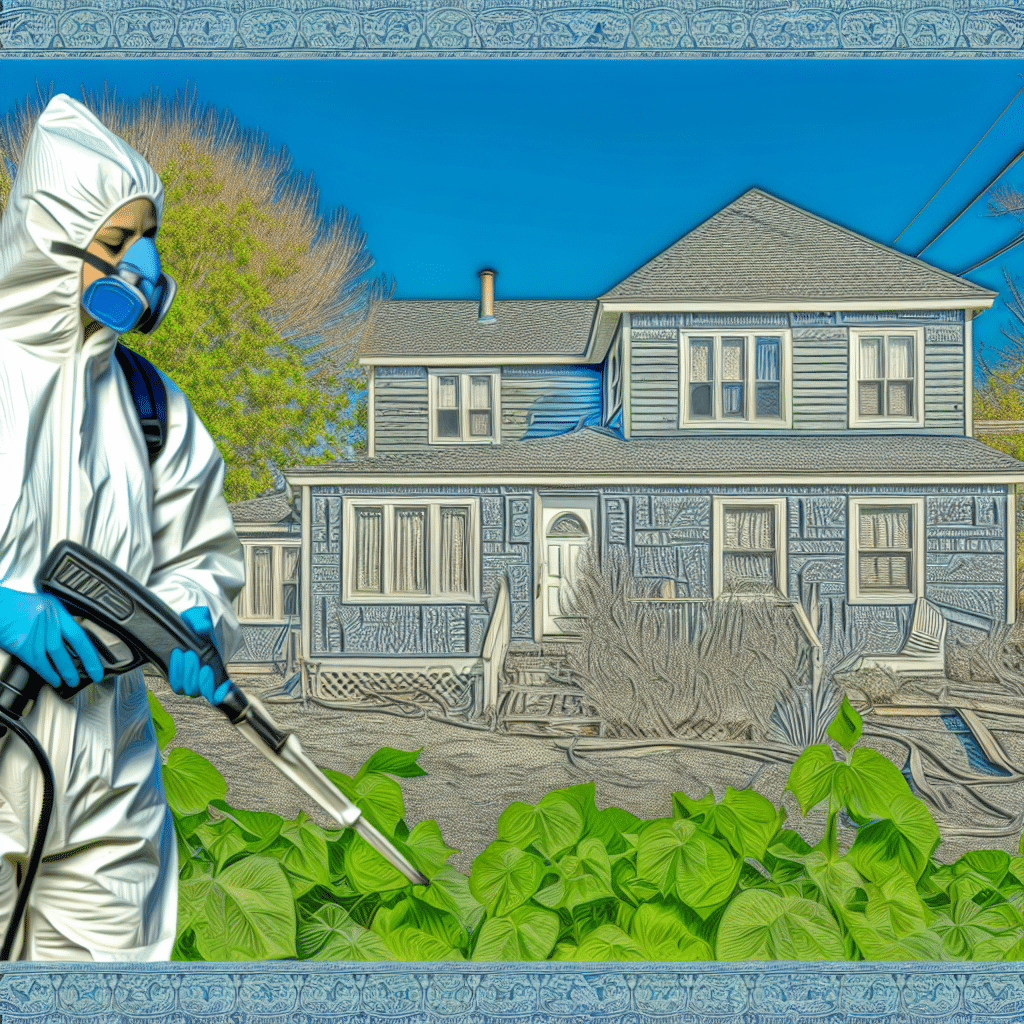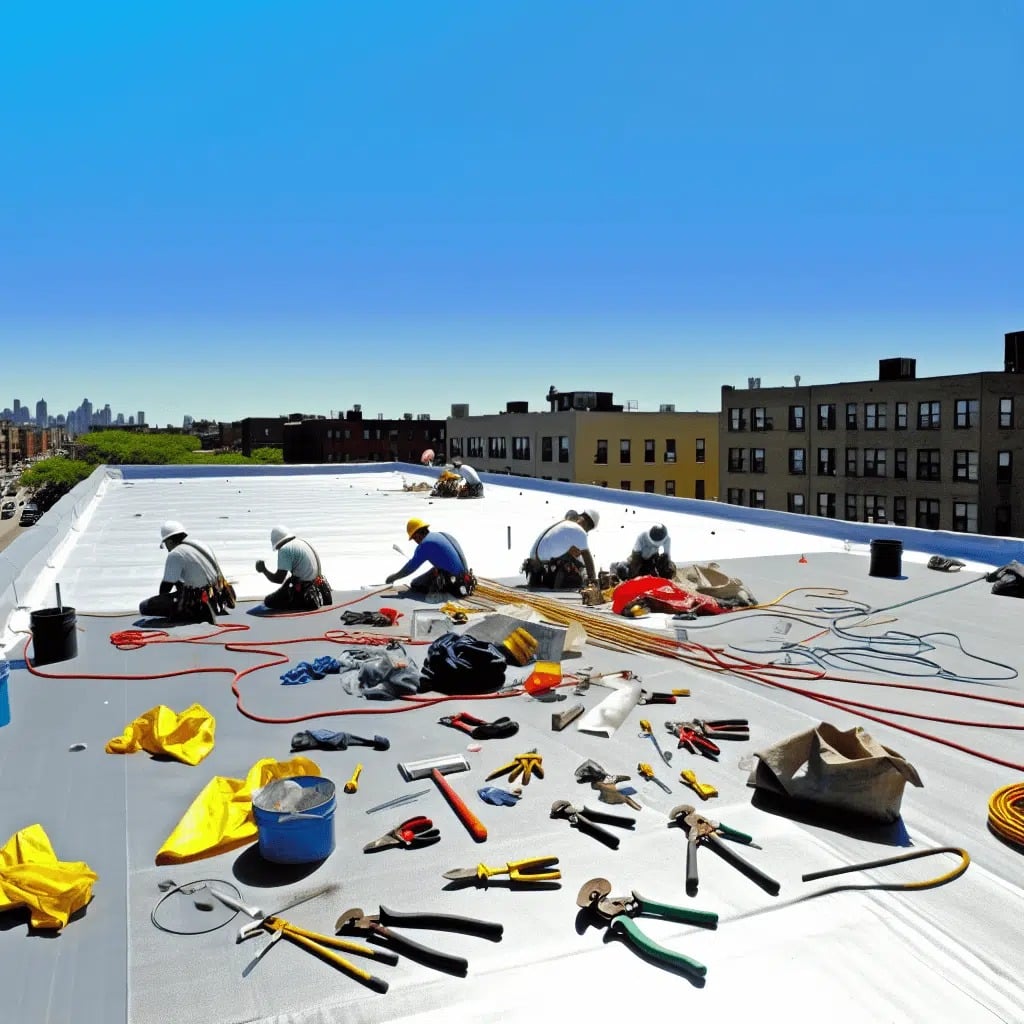The Hidden Costs of Mold in Your Home
Every homeowner in Providence knows the saying, “A stitch in time saves nine.” This is especially true when it comes to dealing with mold—a common nemesis in high-humidity areas like ours during the blazing summer months. The cost of mold remediation is not just a simple line item, it’s a crucial investment in the health of your home and family. It’s far too easy to overlook a small patch of mold, but without prompt and professional intervention, it can escalate into a larger, more expensive problem. Understanding the potential costs, both monetary and to your health, is essential.
Assessing Your Space for Mold
The first step in addressing a mold issue is recognizing the probable signs: a sustained musty smell, visible growth, or persistent health symptoms. Conducting a thorough evaluation of your space is key, as the extent of infestation heavily dictates the remediation process and therefore, the cost. Engaging experts like Rinaldi RoofingRoofing means employing a systematic approach to identify every nook and cranny where mold might lurk. A professional assessment not only quantifies the problem but also provides a blueprint for effective remediation, ensuring long-term solutions rather than short-term fixes.
Understanding the Process and Its Value
Mold remediation often begins with a comprehensive evaluation, but it does not stop there. A seasoned professional will follow through with a plan that tackles both the present infestation and potential future problems. This strategic approach may impact upfront costs, but it can save a great deal in the long run—not just in financial terms, but also by safeguarding your home’s structural integrity and living quality. Essentially, the cost of mold remediation should be seen as an investment: one that preserves your property’s value and ensures a healthy environment for you and your loved ones. And isn’t that peace of mind worth every penny?
Factors Influencing Mold Remediation Costs
When facing mold in your home, understanding the potential costs involved is key in preparing for remediation. Size and severity of the infestation, type of mold present, and accessibility of the affected area all play critical roles in determining the final bill. A larger area or a harder-to-reach space can complicate the removal process and, as a result, increase the cost of mold remediation. Additionally, some types of mold require more specialized treatment, which can also affect pricing. It’s worth noting that cutting corners in the remediation process might lead to recurring problems, thus, it’s vital to invest in quality services from the outset.
The Role of Insurance in Managing Costs
Navigating insurance coverage can be as tricky as tackling mold itself. While many homeowners wonder if their policy will bear the cost of mold remediation, the answer often depends on the source of the mold and the specific terms of their insurance contract. It’s imperative to understand what your insurance covers before disaster strikes, and Rinaldi RoofingRoofing can assist you in determining if you’re eligible for coverage support. A proactive discussion with your provider can illuminate potential financial aid avenues in the face of mold challenges. Remember, being informed can significantly reduce stress and financial burden in the long run.
Health Implications and the Need for Expertise
The importance of addressing mold extends beyond mere aesthetics or property value—it’s a matter of health. Prolonged exposure to mold can lead to allergic reactions, respiratory issues, and other serious health conditions especially in children and the elderly. By harnessing the expertise of professionals like those at Rinaldi RoofingRoofing, you’re not just paying for mold removal; you’re investing in the health and well-being of your household. Quality mold remediation requires specialized tools and methods to ensure the mold is thoroughly eradicated, and the experts bring that level of detailed care to each case. Rest assured that with the right team, your living environment can be restored to a safe and comfortable state.
Choosing the Right Mold Remediation Team
Selecting the right professionals for mold remediation is crucial for Providence homeowners. It’s not just about removing the mold; it’s about ensuring that it doesn’t return. That’s why it’s important to work with a team like Rinaldi RoofingRoofing, with a proven track record for effectively tackling mold issues in various types of properties. Before making a decision, consider the company’s experience, the technologies they use, and their approach to preventing future growth. The right choice will not only remedy the current problem but also protect your home for years to come.
Understanding the Remediation Process
Mold remediation is a detailed process that begins with a thorough inspection and assessment, followed by containment and air filtration to prevent the spread of mold spores. The actual removal and cleaning are intricate steps, requiring not just physical removal but also addressing the moisture source that contributed to the mold growth. After eradication, the area is treated with antimicrobial and antifungal treatments for future protection. It’s a multistep approach that ensures both immediate and long-term results, emphasizing the expertise and detailed work Rinaldi RoofingRoofing brings to each project.
Final Thoughts and Taking Action
As we wrap up, remember that the cost of mold remediation can feel daunting, but compared to the costs of ignoring the problem—both financially and health-wise—it’s an investment worth making. Our aim at Rinaldi RoofingRoofing is not just to remediate mold but to ensure your peace of mind knowing your home is safe and sound. With summer in Providence setting the stage for potential mold growth, now is the time to take action. If you suspect mold in your home, reach out to the experts and safeguard your living space. By choosing informed and preventative care, you protect the things that matter most—your home and your health.
Proven Strategies for Mold Remediation Success
Tip 1:
Ensure regular mold inspections, especially after wet seasons, as early detection can significantly reduce remediation costs. A professional assessment helps determine the precise action needed to prevent further spread.
Tip 2:
Understand the common signs of mold, such as musty odors or discolored walls, which may indicate hidden growth. Prompt attention to these signs can mitigate health risks and property damage.
Tip 3:
Investigate whether your homeowner’s insurance policy covers mold remediation, as some policies include it, especially if caused by a covered peril, like a broken pipe.
Tip 4:
Ask about the timeline and process for mold removal when hiring professionals. A thorough job might require a few days, but it ensures complete eradication of the issue.
Tip 5:
Stay informed about the health implications of mold in your home. Consult with mold remediation experts to learn about preventive measures and air quality improvement to protect your family’s well-being.
Expert Insights on Mold Challenges
How often should I inspect my property for mold?
Ideally, you should inspect your property for mold at least annually, or more frequently if you’ve experienced moisture issues or live in a high humidity area.
What are the signs that indicate the presence of mold?
Common signs of mold include musty odors, visible mold growth, water stains, and allergy-like symptoms without another evident cause.
Can mold remediation be covered by homeowner’s insurance?
Mold remediation may be covered by insurance if it’s the result of a covered peril, such as a burst pipe, but typically it is not covered if it results from neglect or deferred maintenance.
How long does the mold removal process typically take?
The duration of the mold removal process can vary from one day to several weeks, depending on the extent of the mold infestation and the size of the affected area.
What are the health risks associated with mold in my home?
Exposure to mold can cause respiratory issues, allergies, and in severe cases, might lead to more serious health problems like asthma or other lung conditions.



